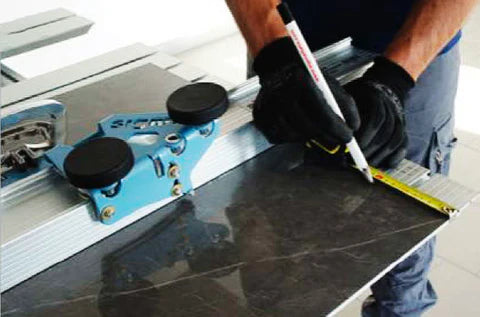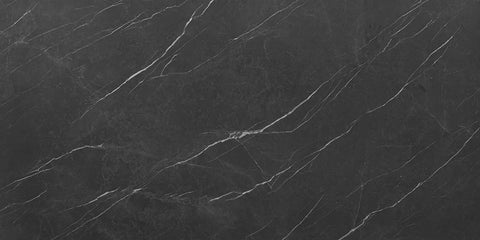
Installing Rock Slabs: Easier Than Ceramic Tiles
Ceramic tiles versus rock slabs are the most durable and aesthetically pleasing materials for renovating your space. Surprisingly, cutting and installing rock slabs may be perceived as a more straightforward process compared to ceramic tiles. Let's delve into why opting for rock slabs might just make your project a breeze.
Natural stone slabs are large pieces of granite, marble, or other natural stones, prized for their durability and unique appearance.

Ceramic tiles, on the other hand, are made of clay and fire, offering greater design versatility and a lower price point.

Slate and tile have different origins. As mentioned above, slate is natural while tiles are man-made. Rock slabs are naturally durable by their ability to resist wear and heat, while ceramic tiles are more cost-effective and lighter than rock slabs. Ceramic tiles provide a wide range of design options through glazes, while rock slabs offer a variety of patterns and colors. It is ultimately determined by factors such as aesthetics, budget constraints, and durability requirements for a particular application that determine which of these materials to choose.
Cutting and installing rock slabs for various projects is relatively easy compared to installing tiles because each material has its own inherent properties and characteristics. Natural stone slabs, primarily made of marble or granite, have a high hardness level that makes cutting them less likely to fracture or damage. Using traditional stone-cutting tools, such as drills and saw blades, to work with rock slabs is especially convenient due to their robust nature.
Alternatively, ceramic tiles, which are made from ceramic materials, are often more prone to breakage than natural stone tiles due to their hardness. In this way, the specialized nature of ceramic tiles may necessitate the use of specialized cutting tools, such as tile cutters, which may pose a problem for woodworking or metalworking.
By utilizing different cutting tools, the contrast between rock slabs and ceramic tiles is further highlighted. Rock slabs' innate hardness renders conventional stone-cutting tools more accessible, enabling them to achieve smoother cuts effortlessly. Additionally, ceramic tiles' unique structure and hardness may require specialist tools like tile cutters to perform their functions, which may pose a challenge for conventional tools used in woodworking or metalworking.
A critical aspect of the cutting process is precision tolerance. Although rock slabs are more suitable for cutting than other materials, their tolerance for variations and imperfections make them less prone to edge damage when cutting isn't perfectly precise. The relative brittleness of ceramic tiles, however, requires a higher degree of precision when cutting. The importance of meticulous attention during cutting can be underscored by the possibility of edge breakage or cracking due to minor errors in precision.
Lastly, vibrations and pressures encountered during cutting contribute to the contrasting technical characteristics of these materials. Since rock slabs are naturally hard, it is possible to apply a certain amount of pressure and vibration during cutting without causing significant damage. Compared to ceramic tiles, which are more brittle, they require special handling to prevent excessive vibrations and pressure that could damage them.
A rock slab's natural hardness is responsible for the technical nuances that make it easier to cut than a ceramic tile. A feature such as this not only increases the tolerance of conventional stone-cutting tools, but also minimises the impact of vibrations and pressures during the cutting process. Therefore, selecting rock slabs may present a more convenient option for engineering projects with similar requirements, both in terms of cutting and installation.
Large Porcelain Installation Guide
Aside from the cutting process, rock slabs are also easier to handle, install, and maintain than tiles. Rock slabs are lightweight and structurally sound, simplifying installation and requiring less specialised expertise. As for maintenance, rock slabs can typically provide greater durability, and their surface finishes are easy to clean, so maintenance is less frequent. From an environmental perspective, natural rock panels are also more sustainable.
In summary, rock slabs offer significant advantages in terms of cutting, handling, installation and maintenance. Rock slabs panels simplify the cutting process and are more robust and durable to install due to their inherent hardness. Because rock slabs require less expertise during installation, they are a practical choice for professionals and homebuilders. Additionally, rock slabs are eco-friendly, in line with sustainable building practices, as well as being an aesthetically pleasing panel that allows you to choose from a variety of options to realise a variety of benefits, whether you're considering convenience, efficiency of installation or long-term maintenance. It's a reliable and aesthetically pleasing choice of building material for those seeking durability, ease of installation and natural beauty.